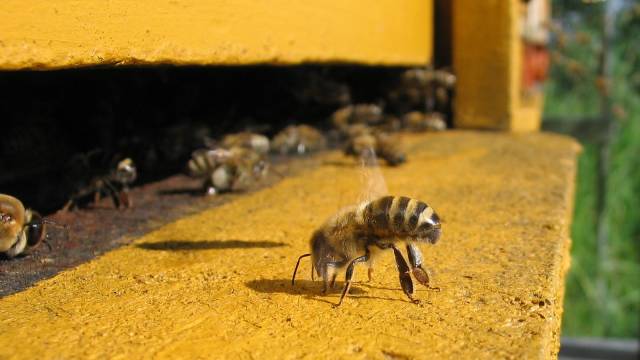Michigan Department of Natural Resources
When we say “pollinator,” the image of a honeybee probably pops into your head. But many other species are essential pollinators, too. There are more than 450 species of native wild bee in Michigan and around 4,000 in the U.S. but they’re not the only ones in trouble.
The rusty patched bumblebee, the first wild bee to be listed, in 2017, as endangered by the U.S. Fish and Wildlife Service, is of particular concern for conservationists. Because of their ability to “buzz pollinate,” these bees are very effective pollinators. They rely on hydrangea, locust trees, goldenrod, blueberry bushes, spotted Joe-pye weed and bee balm for food and shelter.
The yellow-banded bumble bee is a USFWS species of concern, and relatively rare. They rely on goldenrod, which can be found in abundance in Michigan. Sometimes considered a weed, this plant provides much-needed nutrients to many different species.
The Poweshiek skipperling and Karner blue butterfly are two endangered butterflies found in Michigan. The skipperling, a small orange, brown and cream butterfly, has declined rapidly in the past 50 years due to habitat loss. Once common on native prairies of the Great Plains and Upper Midwest, this species is thought to now be concentrated in only six populations on earth, two of which are in Michigan. It relies on the grass species prairie dropseed and mat muhly to lay its eggs and black-eyed Susan flowers for food.
The Karner blue butterfly is entirely dependent on the wild lupine. Because of habitat loss, it now only is found in remnant oak savannas. The thumbnail-sized butterfly lays its eggs on or near lupine plants, and its caterpillars feed only on lupine leaves and flowers.
There are many other endangered and rare pollinators in Michigan. All are important for our local ecosystems, and their decline has troubling consequences. Many of the factors driving their decline are human-caused, like intensive farming, climate change, pesticide use and habitat loss.
So, how can you help these important, endangered or rare species? Get involved.
-Learn how to identify native pollinators and report your observations.
-Become an MSU pollinator champion.
-Get involved in local habitat restoration and protection projects.
-Plant a pollinator garden with the key plants these species rely on. Even a small patch of pollinator-friendly greenery is helpful.







